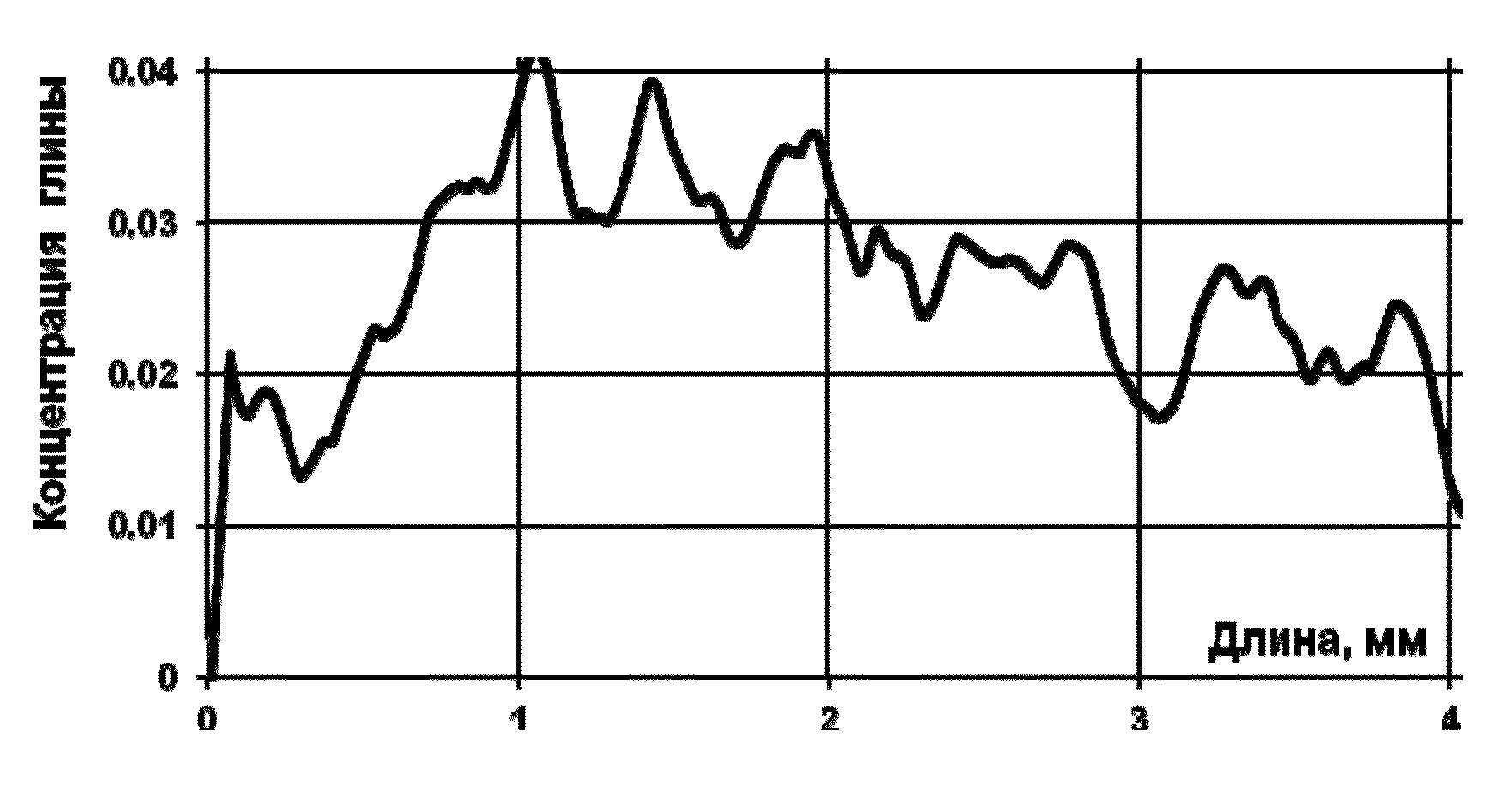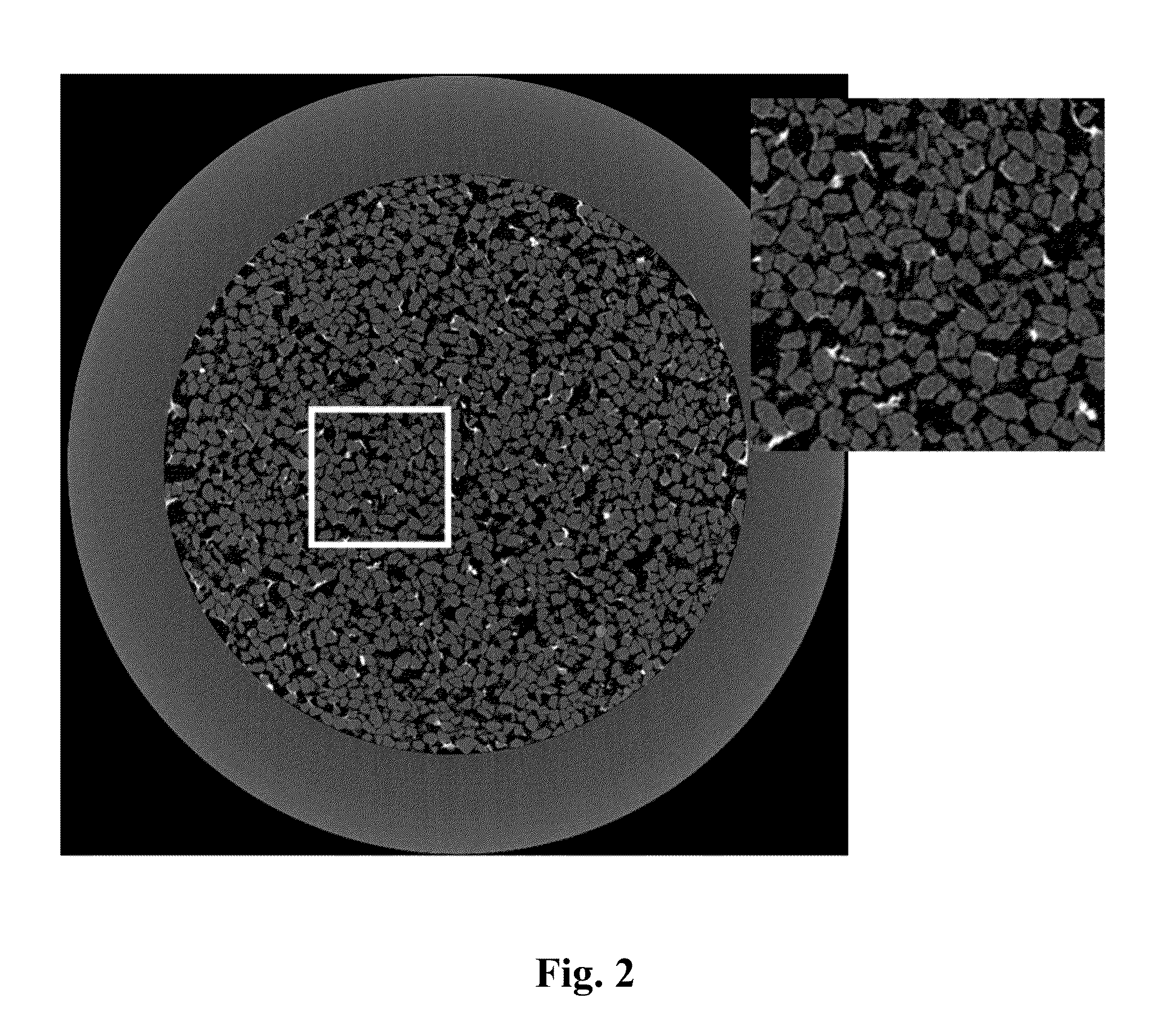Method for determining spatial distribution and concentration of clay in a core sample
a technology of clay and core sample, applied in the direction of material analysis using wave/particle radiation, instruments, nuclear engineering, etc., can solve the problems of significant difference between recovered and initial permeability, inability to evaluate the penetration depth of drilling mud, and inability to justify the use of barite as a contrast agent to evaluate the drilling mud penetration depth, etc., to improve the x-ray contrast of clay and improve the accuracy of spatial distribution
- Summary
- Abstract
- Description
- Claims
- Application Information
AI Technical Summary
Benefits of technology
Problems solved by technology
Method used
Image
Examples
Embodiment Construction
[0039]If a water-soluble salt of metal with a high atomic weight capable of entering into a selective ion-exchange reaction with a clay is used as an X-ray contrast substance, heavy metal ions are accumulated on the clay thus increasing its contrast to X-ray radiation. As a result of injecting a non-contrast displacing agent into the sample after the selective ion exchange reaction remaining heavy metal salts and reaction products are washed out of the core sample.
[0040]As an example of the invention embodiment let us consider the use of the method claimed for the determination of the increase of contrast to an X-ray radiation for the clay retained in a pore volume after the cycle direct-reverse filtration of a model drilling mud (2% water solution of bentonite clay) through the core sample.
[0041]Filtration experiment on the injection of a bentonite clay 2% water solution and subsequent washout of the penetrated clay from a porous medium (reverse injection) is performed. After the e...
PUM
 Login to View More
Login to View More Abstract
Description
Claims
Application Information
 Login to View More
Login to View More - R&D
- Intellectual Property
- Life Sciences
- Materials
- Tech Scout
- Unparalleled Data Quality
- Higher Quality Content
- 60% Fewer Hallucinations
Browse by: Latest US Patents, China's latest patents, Technical Efficacy Thesaurus, Application Domain, Technology Topic, Popular Technical Reports.
© 2025 PatSnap. All rights reserved.Legal|Privacy policy|Modern Slavery Act Transparency Statement|Sitemap|About US| Contact US: help@patsnap.com



